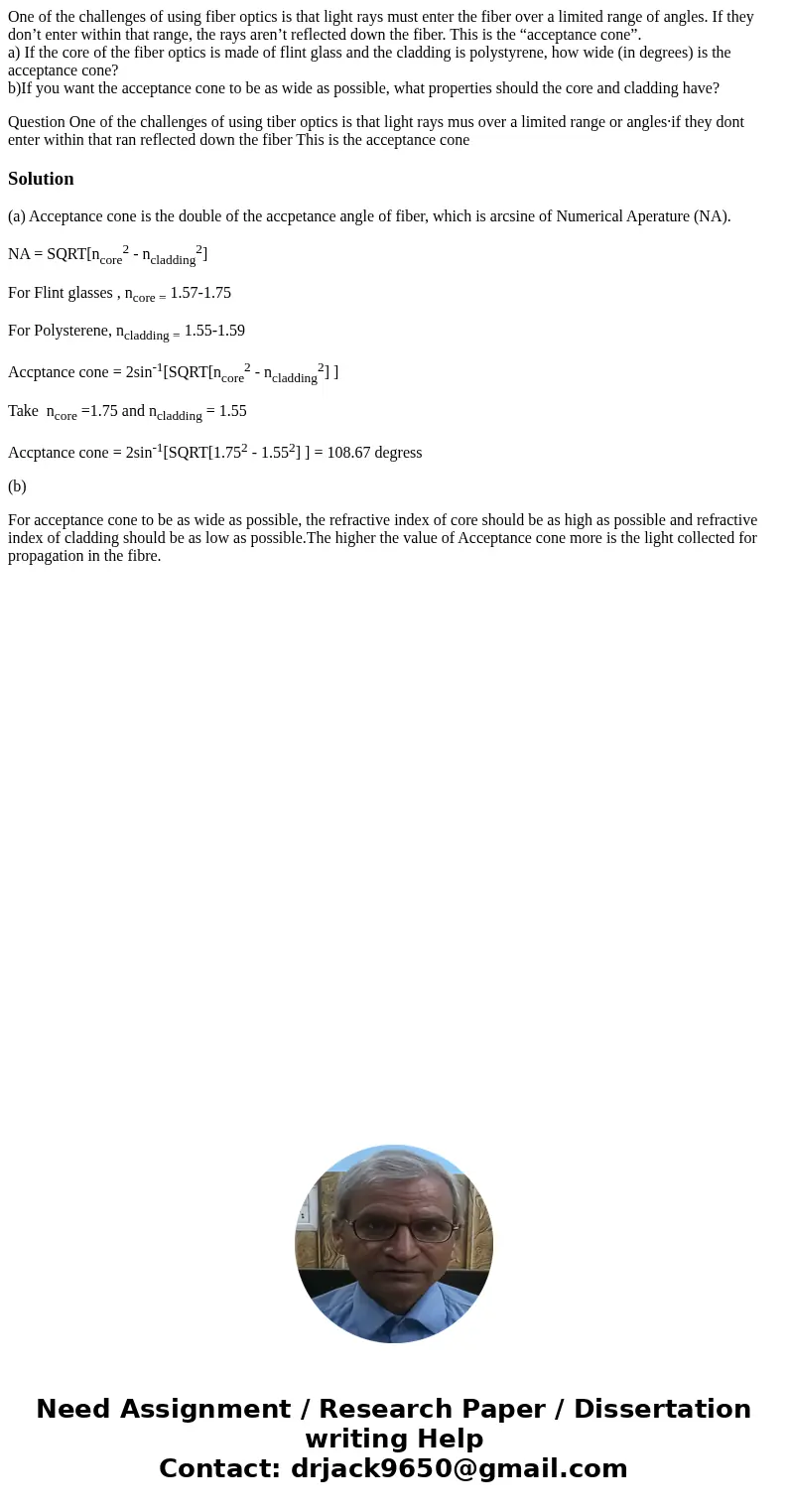One of the challenges of using fiber optics is that light ra
One of the challenges of using fiber optics is that light rays must enter the fiber over a limited range of angles. If they don’t enter within that range, the rays aren’t reflected down the fiber. This is the “acceptance cone”.
a) If the core of the fiber optics is made of flint glass and the cladding is polystyrene, how wide (in degrees) is the acceptance cone?
b)If you want the acceptance cone to be as wide as possible, what properties should the core and cladding have?
Solution
(a) Acceptance cone is the double of the accpetance angle of fiber, which is arcsine of Numerical Aperature (NA).
NA = SQRT[ncore2 - ncladding2]
For Flint glasses , ncore = 1.57-1.75
For Polysterene, ncladding = 1.55-1.59
Accptance cone = 2sin-1[SQRT[ncore2 - ncladding2] ]
Take ncore =1.75 and ncladding = 1.55
Accptance cone = 2sin-1[SQRT[1.752 - 1.552] ] = 108.67 degress
(b)
For acceptance cone to be as wide as possible, the refractive index of core should be as high as possible and refractive index of cladding should be as low as possible.The higher the value of Acceptance cone more is the light collected for propagation in the fibre.

 Homework Sourse
Homework Sourse